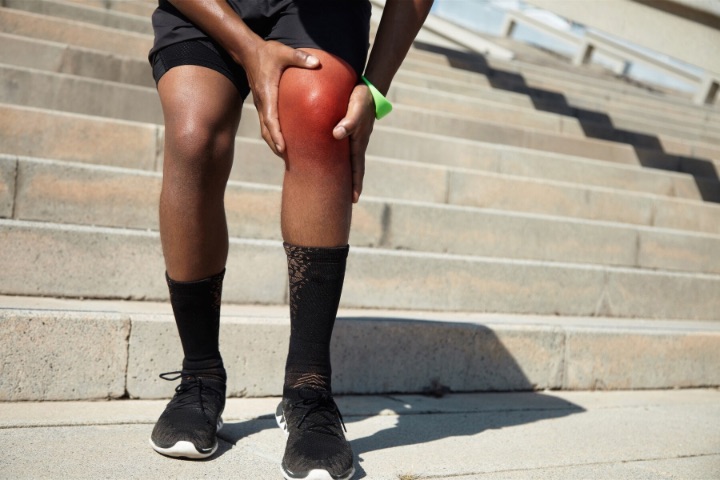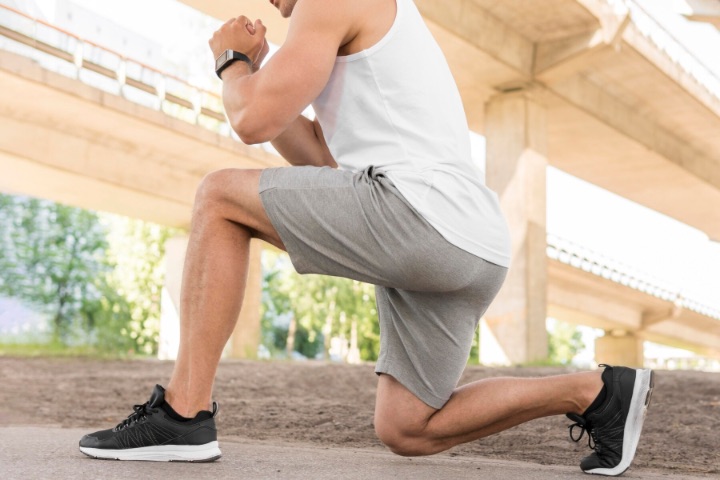Patellofemoral pain syndrome (PFPS) is a condition characterized by pain in the front of the knee joint. The pain in and around the kneecap, known as patellar pain, occurs when the connection between the patella and femur becomes uncomfortable. This discomfort is caused by excessive pressure on the joint due to misalignment of the kneecap.
This can lead to irritation and deterioration of the joint surface behind the kneecap. Athletes who participate in activities such as running, jumping, landing sports, and squatting are particularly susceptible to this condition, often due to abnormal muscle balance or poor control of their movements. So diagnosis and treatment at an early time is important.
PFPS can occur due to several reasons:

Photo Credit: wayhomestudio, Freepik
PFPS is often the result of various biomechanical factors that affect the joint in knee. These include weak gluteal muscles, improper foot posture, muscle imbalances, and tight lateral knee structures. Adolescents are particularly susceptible due to the faster growth of their long bones compared to their muscles, tendons, and ligaments.
This discrepancy can lead to abnormal joint stress, especially if they are physically active and do not stretch properly leading to pain around the knee. Furthermore, repeated trauma from poor biomechanics during walking or running can also cause this syndrome. Addressing these issues during rehabilitation is crucial to prevent future injuries.
The causes of PFPS include:
The indications of PFPS typically include a dull, aching pain where the knee joint meet. The pain can increase under certain conditions, such as:
If the knee pain does not improve within a few days, or if knee mobility becomes more difficult, it is recommended to consult with a healthcare provider.
PFPS is a prevalent knee ailment that results in discomfort of the knee around the patella.

Photo Credit: Freepik
To address the condition, a mixture of exercises, physiotherapy, and changes in lifestyle are usually recommended. Various treatment options include exercise, physiotherapy, and lifestyle adjustments.
Collaborating closely with your health care provider who has your past history and physical examination can help to create a customized treatment plan for your specific condition is crucial. By receiving appropriate treatment, individuals with PFPS can anticipate a notable enhancement in their symptoms.
Patellofemoral Pain Syndrome is a condition that causes pain at the front of the knee, commonly known as runner’s knee, jumper’s knee, or anterior knee pain.
The symptoms of PFPS include aching pain in the front of the knee, particularly around the kneecap due to overload of the patellofemoral joint. The pain or discomfort often increases with walking, running, jumping, and climbing stairs.
PFPS can be caused by various factors, including overuse, misalignment of the patella (kneecap), tight or weak muscles around the knee, hip and knee imbalances, and excessive stress on the knees during physical activities.
Some risk factors associated with PFPS include previous knee injury or surgery, improper footwear, flat feet or high arches, weak quadriceps muscles, and participating in activities that involve repetitive knee bending and stress.
The diagnosis of Patellofemoral Pain Syndrome usually involves a physical examination by a healthcare provider, such as a sports medicine specialist or a physical therapist. Imaging tests, such as X-rays or MRI, may also be used to rule out other knee problems.
The treatment for PFPS typically includes a combination of conservative approaches and physical interventions. These may include rest, ice, nonsteroidal anti-inflammatory drugs (NSAIDs), appropriate exercises to strengthen the muscles around the knee, and modifications to physical activities to reduce knee stress. In some cases, a knee brace or orthotics may be recommended.
Physical therapy is often a key component in treating Patellofemoral Pain Syndrome. A physical therapist can provide exercises and techniques to address muscle imbalances, improve knee alignment, and enhance overall knee strength and stability.
During physical therapy for PFPS, you can expect a comprehensive evaluation of your knee and its surrounding structures. The therapist will develop a customized treatment plan that may include exercises to stretch tight muscles, strengthen weak muscles, improve flexibility, and enhance knee biomechanics.
While preventing PFPS may not always be possible, some steps can help reduce the risk. These include maintaining strong and balanced muscles around the knee through exercise therapy, wearing appropriate footwear, using correct techniques during physical activities, and gradually increasing the intensity and duration of exercise to avoid overuse.
If left untreated or poorly managed, PFPS can lead to chronic pain and limitation in daily activities. It is important to seek professional medical advice and appropriate treatment to prevent long-term complications.